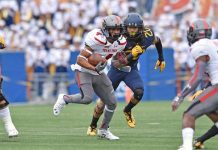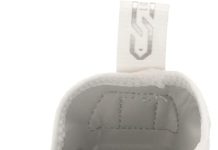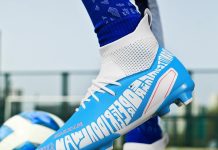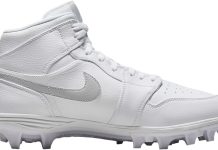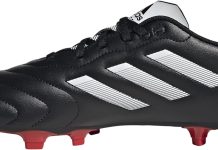In the world of professional football, there is an endless fascination with the gear that NFL players wear, particularly their cleats. These essential pieces of equipment are not only worn for performance and safety reasons but also serve as a canvas for self-expression. Many fans wonder, do NFL players actually get new cleats for every single game? Let’s take a closer look at this intriguing question and uncover the truth behind the footwear of these gridiron gladiators.
Introduction
Welcome to our comprehensive article on the importance of cleats in the NFL! As avid football fans, we understand the vital role that cleats play in the performance, safety, and overall success of NFL players. In this article, we will explore the significance of cleats in the NFL, discuss various designs and construction methods, examine factors affecting their lifespan, delve into proper maintenance and care, and even touch upon the influence of sponsorship contracts. So, let’s dive in and discover the world of cleats in professional football!
The Importance of Cleats in the NFL
When it comes to playing in the NFL, cleats are an essential piece of equipment that can significantly impact a player’s performance. Let’s take a closer look at why cleats are so important in professional football.
Review contents
Improving Traction and Stability
One of the primary functions of cleats is to provide exceptional traction and stability on the field. The NFL is known for its high-speed, intense gameplay, where quick changes in direction and sudden stops are common. Cleats with well-designed traction patterns help players maintain their footing, allowing for better acceleration, agility, and stability during these fast-paced moments.
Preventing Injuries
Cleats also serve a crucial purpose in preventing injuries on the field. The combination of the right traction pattern and proper grip significantly reduces the risk of slipping or losing balance, thereby minimizing the chances of potential ankle, knee, or other lower body injuries. With the immense physicality of professional football, the right pair of cleats becomes essential in avoiding unnecessary harm.
Enhancing Performance
In addition to traction and injury prevention, cleats play a significant role in enhancing a player’s overall performance. Specialized designs, materials, and construction techniques are employed to optimize player comfort, fit, and maneuverability. Cleats with superior construction and technology can contribute to improved speed, agility, and responsiveness, allowing players to perform at their best on the field.
Cleat Designs and Construction
Now that we understand the importance of cleats in the NFL, let’s explore the different designs and construction methods employed to create high-performing footwear for professional football players.
Different Types of Cleats
Cleats come in various types, each designed to cater to different field conditions and player preferences. The most common types include molded cleats, detachable cleats, and turf shoes. Molded cleats feature permanent studs attached to the outsole, providing excellent traction and stability on natural grass fields. Detachable cleats, as the name suggests, allow players to replace and customize the studs according to field conditions. Turf shoes, on the other hand, are designed for artificial turf and feature shorter, rubberized studs offering maximum grip.
Materials Used in Cleat Construction
The choice of materials used in cleat construction greatly influences their performance, durability, and comfort. Synthetic materials such as polyurethane and thermoplastic polyurethane (TPU) are commonly used for the outsole, providing a combination of lightweight flexibility and strength. The upper portion of the cleat is often made from a mix of synthetic materials, mesh, and leather to offer breathability, support, and protection. Cleat manufacturers continuously innovate and experiment with new materials to enhance player performance and comfort.
The Lifespan of Cleats
As with any piece of equipment, cleats have a limited lifespan. Several factors can affect the longevity of cleats, including the playing surface, player weight, frequency of use, and maintenance practices. Let’s take a closer look at these factors and understand the lifespan of cleats.
Factors Affecting Cleat Longevity
Playing surface plays a significant role in determining how long cleats last. Natural grass fields can be harsh on cleats, causing accelerated wear and tear compared to artificial turf fields. Additionally, the player’s weight and style of play also affect the lifespan of cleats. Players with higher body weight or who engage in more aggressive movements may experience faster deterioration of cleats. Finally, the overall quality and construction of the cleats themselves play a critical role in determining their lifespan.
Frequency of Cleat Replacement
Due to the physical demands of the game and the wear and tear cleats endure, NFL players generally replace their cleats every few games. The exact frequency can vary depending on the factors mentioned earlier, but players typically change cleats every two to three games to ensure optimal performance and safety. Well-maintained cleats may last longer, but it is crucial for players to regularly assess the condition of their cleats and replace them when necessary.
Cleat Maintenance and Care
Proper maintenance and care are essential to extend the lifespan of cleats and ensure consistent performance. Let’s explore some key practices for maintaining and caring for cleats.
Cleaning and Drying
After each game or practice session, it is crucial to clean the cleats thoroughly. Removing dirt, mud, and other debris not only keeps the cleats looking good but also prevents damage to the materials. Gently scrubbing the cleats with a soft brush and mild cleaning solution, then rinsing and air-drying them, is an effective cleaning method. It is important to avoid using harsh chemicals or applying excessive force during cleaning, as it can damage the materials.
Replacing Cleat Spikes
For detachable cleats, regularly inspecting and replacing worn or damaged spikes is necessary. The spikes are vital for maintaining traction and stability, so damaged or missing spikes can significantly impact performance and increase the risk of injury. Follow the manufacturer’s guidelines for replacing spikes and ensure they are securely fastened to the sole.
Storage and Protection
When not in use, cleats should be stored in a cool, dry place to prevent moisture buildup, which can lead to unpleasant odors and deterioration of materials. It is recommended to store cleats in a shoe bag or with desiccant bags to absorb moisture. Additionally, protecting cleats from extreme temperature conditions, such as extreme heat or cold, helps maintain their optimal performance and prolong their lifespan.
The Role of Sponsorship and Endorsements
In the world of professional football, sponsorship contracts between cleat manufacturers and NFL players play a significant role. Let’s explore the influence of sponsorship and endorsements on cleats in the NFL.
Sponsored Players with Free Cleats
Many NFL players have lucrative sponsorship contracts with major sports footwear companies, providing them with free cleats. These endorsement deals not only help players financially but also grant them access to the latest and most technologically advanced cleats available. Cleat manufacturers benefit from sponsoring high-profile players, as their performance on the field can contribute to increased brand visibility and consumer trust.
Influence of Sponsorship Contracts
Sponsorship contracts often come with certain expectations and guidelines regarding cleat usage. While players enjoy the perks of free cleats, they might have to adhere to certain branding requirements, including wearing specific colors or designs. The NFL also has regulations and guidelines on proper uniformity, ensuring that all players present a cohesive and professional appearance on the field. These sponsorship contracts and league regulations are carefully balanced to allow for player individuality while maintaining a unified team image.
NFL Rules and Regulations Regarding Cleats
The NFL has specific rules and regulations in place regarding the design and appearance of cleats. Let’s take a closer look at these guidelines.
Guidelines on Uniformity
To maintain a sense of team unity, the NFL has guidelines on uniformity, including the cleats players wear. Cleats must conform to specific color schemes and designs consistent with the team’s uniform. This helps create a cohesive look across the league and prevents players from wearing cleats that could potentially distract or clash with the overall aesthetic.
Acceptable Cleat Colors and Designs
The NFL allows players to express individuality through their cleats within the bounds of the team’s uniform. While solid colors are generally preferred, the league does permit cleats with limited design elements, such as team logos or personal branding. However, the focus remains on ensuring that the cleats do not violate the league’s uniform guidelines or detract from the overall image of the team.
The Advantages of Wearing New Cleats
In the fast-paced world of professional football, wearing new cleats can provide distinct advantages for players. Let’s explore the benefits of donning fresh footwear on the field.
Better Traction and Grip
New cleats offer optimal traction and grip, ensuring that players can confidently maneuver and change directions with precision. The outsole studs of new cleats are sharper and less worn, providing superior traction on different field surfaces. This enhanced grip can make a significant difference in a player’s performance, especially in critical moments during a game.
Improved Comfort and Fit
New cleats often come with updated designs and construction methods to enhance comfort and fit. The materials used in newer cleats are likely to be more flexible, breathable, and supportive. This improved comfort allows players to focus on their game without being hindered by discomfort, blisters, or foot pain. Additionally, a well-fitting pair of cleats can provide better stability and reduce the risk of foot-related injuries.
Player Preferences and Superstitions
Beyond the technical aspects and regulations surrounding cleats, individual player preferences and superstitions play a fascinating role in the world of professional football.
Individual Choices on Cleat Usage
Some players develop personal rituals or superstitions when it comes to their cleats. Whether it’s sticking to a specific brand, wearing a lucky pair of cleats, or even performing a pre-game routine, these practices can help players mentally prepare and bring a sense of familiarity and confidence to their game. The psychological impact of these personal preferences should not be underestimated, as they can greatly influence a player’s mindset and performance on the field.
Conclusion
In conclusion, cleats are not just a piece of footwear for NFL players; they are a crucial tool that can significantly impact performance, safety, and comfort. The right pair of cleats enhances traction, stability, and agility while reducing the risk of injuries. With various designs and construction methods, advanced materials, and continuous innovation, cleat technology continues to evolve, providing players with enhanced performance capabilities. Additionally, proper maintenance, sponsorship contracts, NFL regulations, and the advantages of wearing new cleats all contribute to the intricate and fascinating world of cleats in professional football. Whether it’s a superstar athlete representing their brand or the rookie debuting their chosen pair, cleats remain an essential component of the NFL game, ensuring players have the best chance of success on the field.





